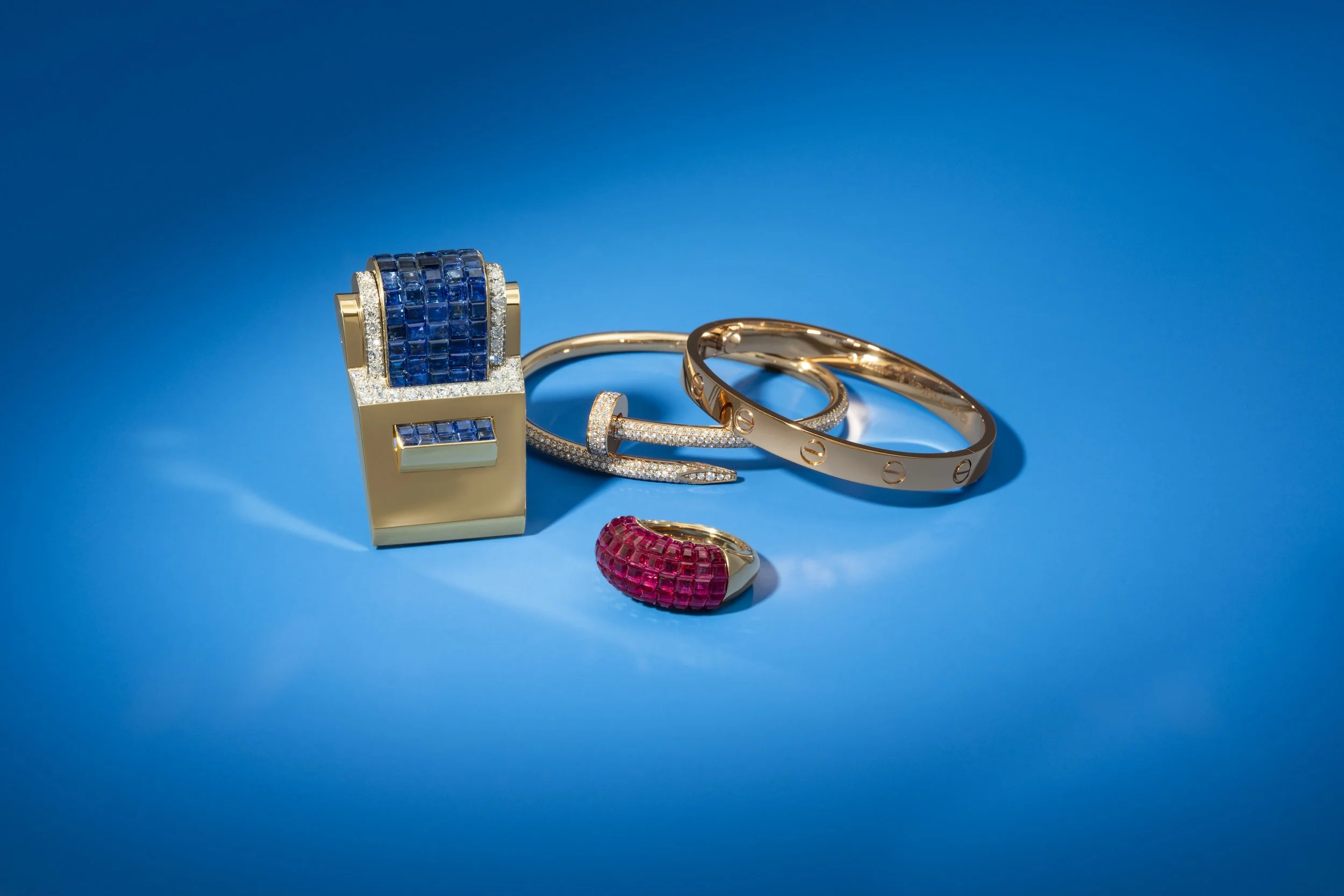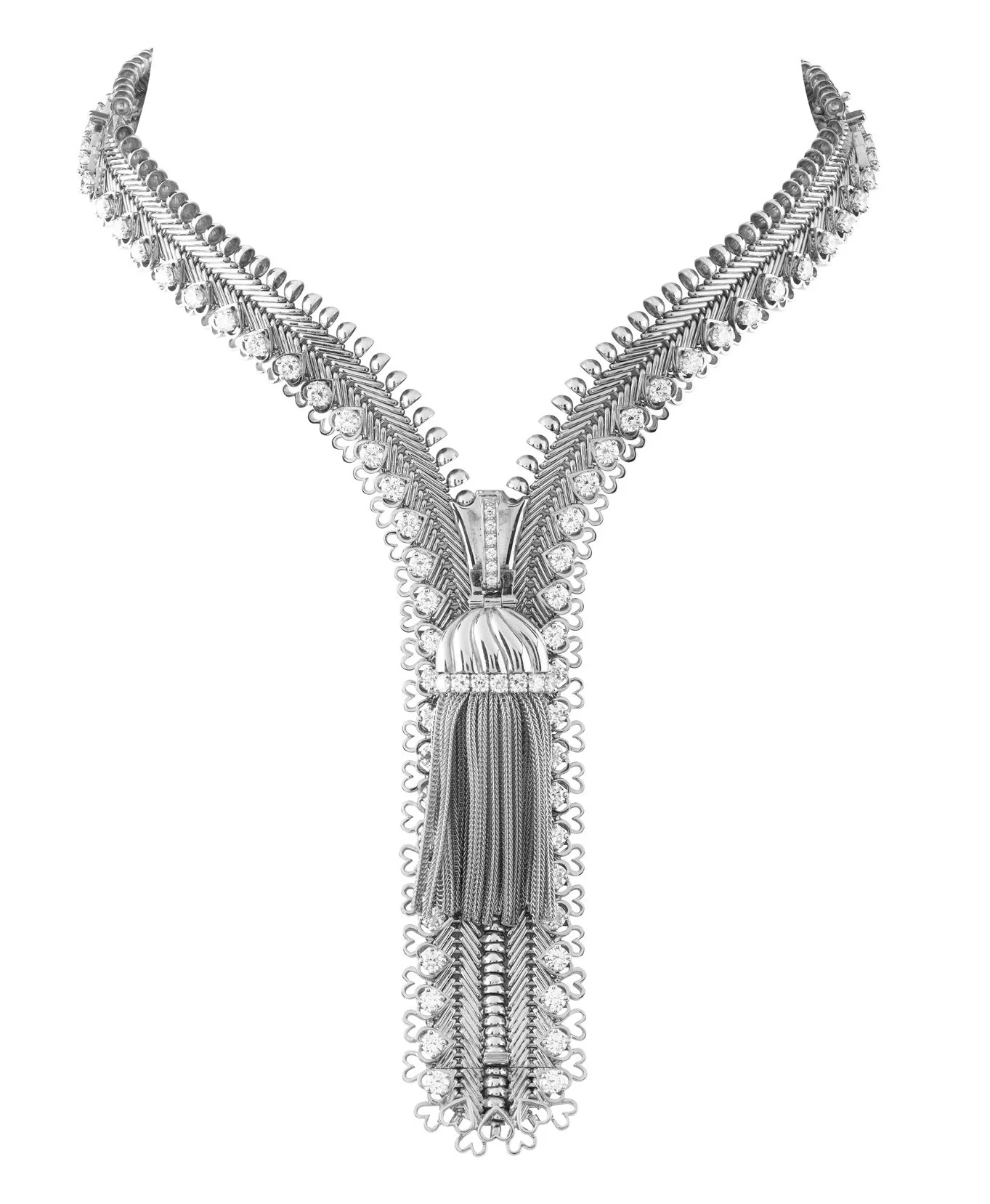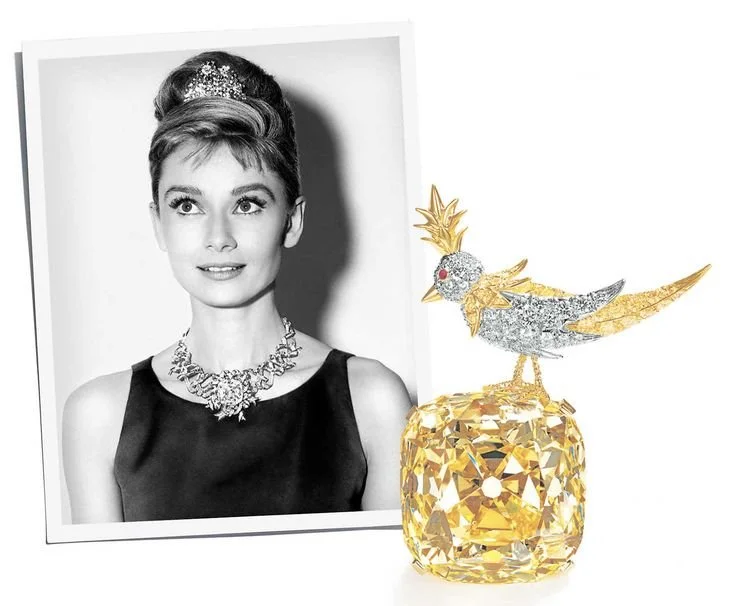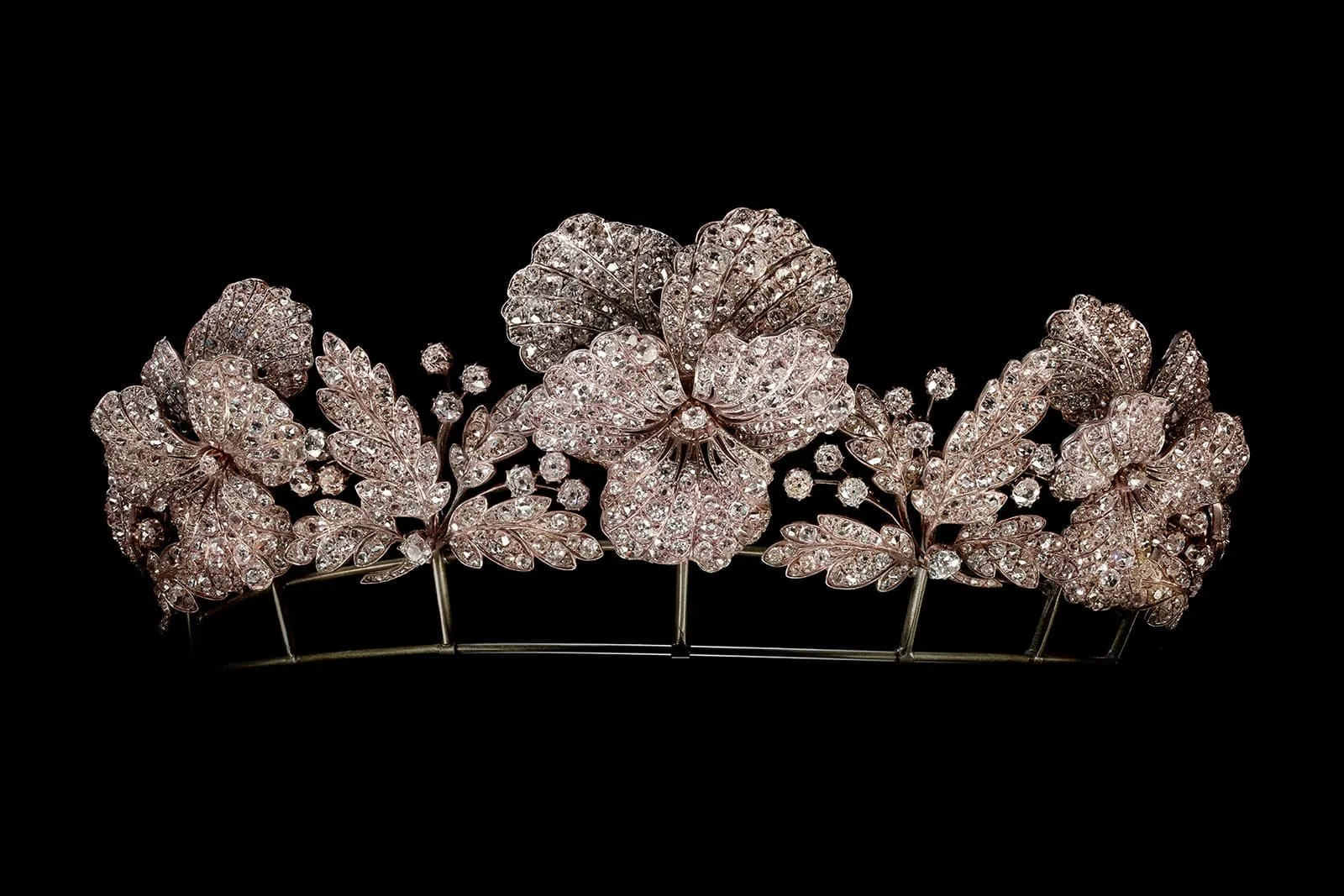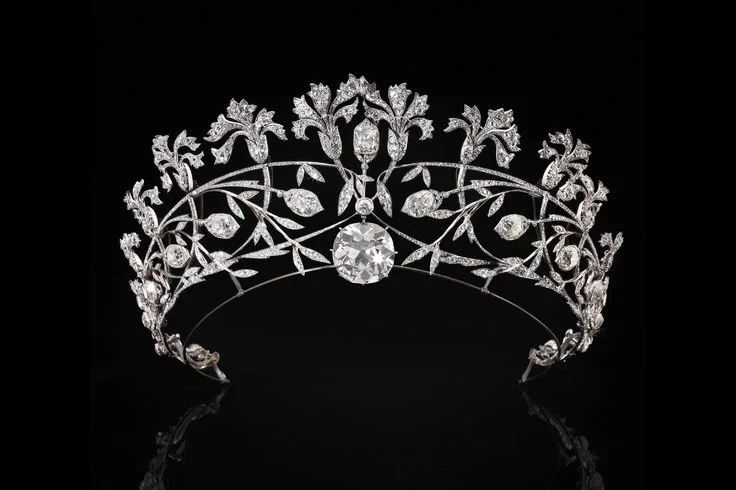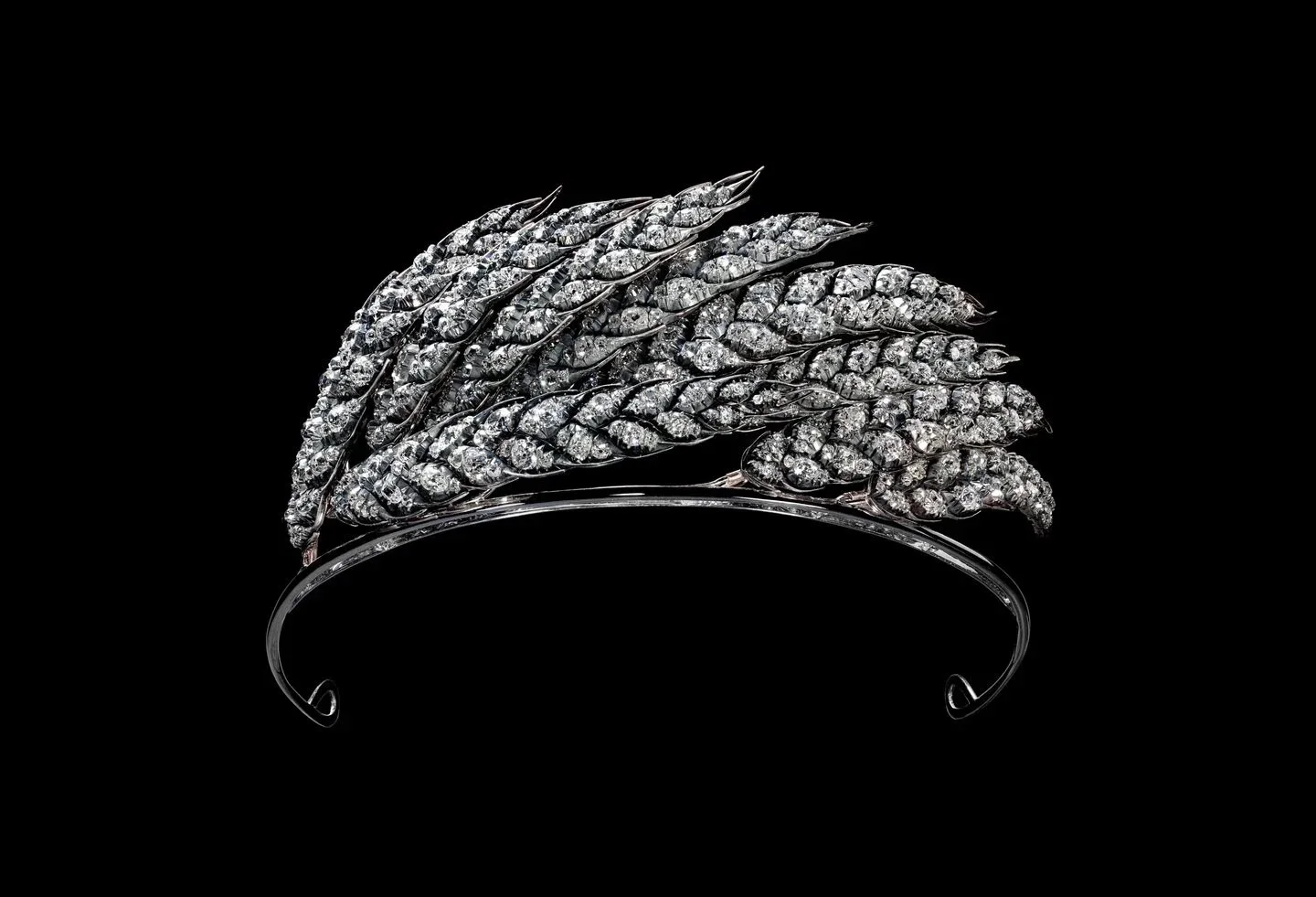Exploring Cartier, Van Cleef & Arpels and Other French Jewelers Histories
For centuries, French jewelers have been the cradle of haute joaillerie, harmoniously blending unparalleled artistry and craftsmanship in jewelry. From the early Renaissance to the Belle Epoque, France has witnessed the birth of world-influential houses such as Chanel, Cartier, Van Cleef & Arpels, and many more. Join us as we discuss the history and legacy behind the French names that have left an indelible mark on the world of fine jewelry.
Cartier: Forward Innovation
Founded in 1847 by Louis-François Cartier, the House of Cartier began as a humble watch workshop before rising to prominence in the late 19th and early 20th centuries, when it became one of Paris's premier jewelry houses.
Known for its forward-thinking approach and the mantra "never copy, always create,” Cartier has devised numerous iconic pieces throughout its history, from popularizing the use of platinum to producing the first modern wristwatch. In 1904, Cartier changed the way of traditional timekeeping by creating the Santos watch, designed for Brazilian aviator Alberto Santos-Dumont. The Santos was one of the first practical wristwatches for men, marking the beginning of Cartier's long association with pioneering watch designs.
In the fine jewelry category, Cartier's Love, Panthère de Cartier, Juste Un Clou, and Tutti Frutti collections stand as some of the house's most significant jewelry creations. Featuring vibrantly colored gemstones in the most intricate settings, the Tutti Frutti showcases Cartier's innovative use of platinum and unique stone cuts of sapphires, rubies, and emeralds—an emblem of the Cartier style. In 1914, the house introduced the Panthère de Cartier, a collection embodying intrigue and strength through the panther motif, accented by diamonds and onyx. You’re likely most familiar with their contemporary Love and Juste Un Cloud collections, created in the 1970s. The Juste Un Clou transformed a simple nail into a fine jewelry statement that evoked a clean, bold, and sophisticated appeal. The Love bracelet’s launch included gifting famous couples around the world with a matching set, cementing the design’s place in pop culture for decades to come. Cartier's inventive spirit is evident in their constant evolution and ongoing influence in fine jewelry.
Van Cleef & Arpels: A Legacy of Enchantment
Van Cleef & Arpels was established in 1906, initially founded by Alfred Van Cleef and Estelle Arpels. Recognized for their whimsical designs, Van Cleef & Arpels swiftly became renowned for their artistry and technical ingenuity.
One of their early contributions to the industry was the Mystery Set™ technique. Developed and patented in 1933, the Mystery Set™ is a groundbreaking technique that allows gemstones to be set with no visible prongs, giving the illusion of free-floating gems on the surface, placed to produce the most stunning jewelry pieces. Such invention led to the creation of some of their most famous pieces, such as the intricate Zip necklace. Designed in the 1930s but not produced until the 1950s, the Zip necklace was inspired by the zipper, following a suggestion from the Duchess of Windsor, who felt inspired by this new type of fastener. The Maison's Zip necklace is an exceptionally versatile piece that can be worn in two ways: open as a necklace and closed as a bracelet.
Another emblem of the Maison is the Alhambra collection, created in 1968, a Van Cleef & Arpels signature aesthetic inspired by the four-leaf clover. Since then, the Alhambra collection has taken form through many variations in rose, yellow, and white gold, and gemstones like pearl, carnelian, and diamonds.
Van Cleef & Arpels has also shone in the horology industry. Embodying the bold and timeless, the Cadenas watch, designed in the 1930s, stands as an icon of Van Cleef & Arpels, seamlessly combining functionality with style and featuring an angled dial that enables the wearer to discreetly read the time.
Today, Van Cleef & Arpels preserves its legacy through their commitment to reflecting the highest levels of artistry and invention in its adaptable and striking collections, making it a leading name in the high jewelry market.
Jean Schlumberger: Artistic Brilliance
Praised for his unique design philosophy, Jean Schlumberger began his career in Paris blending art and nature in extraordinary ways that shone through his work in jewelry. Schlumberger is known for the dynamism he breathes into his designs, bringing to life lively interpretations of creatures from the sea and the sky, flora and fauna.
In 1956, Jean Schlumberger commenced an influential chapter in his career, when he began his legendary collaboration with Tiffany & Co. Among his most renowned works are the Bird on a Rock brooch, a yellow cockatoo perched on a gemstone, and the Paillonné enamel bangle.
These pieces showcase his mastery of vibrant enamel work and imaginative gemstone settings. The Sixteen Stone ring is another illustration of his clever use of materials and design techniques on a bold yet graceful ring featuring round diamonds that alternate with golden Xs in a cross-stitch motif, inspired by his family's roots in the textile industry.
Since 1956, Tiffany & Co. has worked diligently to preserve and promote Schlumberger's legacy through exhibitions and reissues of his magnificent designs, nurturing his influence on contemporary jewelry, with collectors and enthusiasts seeking his coveted works. The most prized Schlumberger designs include a made in Paris hallmark.
Boucheron Jewelry: The ‘Know-How’ of Innovation
Founded in 1858 by Frédéric Boucheron, the House of Boucheron shines through the visionary spirit of its jewelry collections. Boucheron's savoir-faire is a blend of quality standards and master artisanship that flows in the Maison's works, placing it at the forefront of haute joaillerie for over a century.
It was during the Art Nouveau and Art Deco periods when Boucheron's work made significant contributions to the jewelry industry. With intricate designs inspired by nature and geometric patterns, Boucheron's creations from these eras remain celebrated for their artistic and technical excellence.
Boucheron's Question Mark necklace is a remarkable piece of jewelry that has been part of the Maison's collection since 1879, designed by Frédéric Boucheron. The Question Mark necklace was a true innovation in jewelry design as it did not feature a clasp. This revolutionizing design went on to win the prestigious Grand Prix at the 1889 Exposition Universelle in Paris. The Question Mark necklace has continued to evolve, with recent versions showcasing bold creativity, such as the 2011 Serpent Opalescent model worn by Natasha Poly as showcased by The New York Times. This specific necklace effortlessly wraps around the neck and depicts a serpent bedazzled in crystals, diamonds, and mother of pearl. Windsor had the honor of owning this exact piece for a time!
Boucheron's commitment to novelty through design continues today, with the Maison exploring new techniques and materials in their work, all while honoring their heritage.
Chaumet: The Master of Tiaras
Chaumet's history is deeply intertwined with Napoleonic influence, with the Maison serving as the official jeweler to Napoleon and Empress Josephine. This connection laid the foundation for Chaumet's expertise in crafting exquisite tiaras, symbols of romance and power, making the house a master in this craft for over 200 years.
Worn by royalty and members of the high society and reflecting the mastery and creativity of its artisan jewelers, Chaumet's tiaras are renowned for their delicate designs and exceptional craftsmanship standards, cementing the house's reputation as an expert in tiara-making. Throughout its history, Chaumet has made over 2,000 tiaras and has reinvented this piece of head jewelry with every creation, influenced by the styles of the eras—Romanticism, Naturalism, Art Deco, and so on—and driven by the unwavering commitment to remaining a significant presence in the world of jewelry. One of the Maison's most acclaimed tiaras is the Bourbon-Parma tiara, created in 1919 for Archduchess Marie-Anna of Austria. This exquisite regal jewelry piece features a stunning 94.9-carat pear-shaped diamond centerpiece, framed by dazzling diamond scrolls and motifs. Learn more about Chaumet’s tiaras in Katerina Perez’s article, Chaumet in Majesty.
Mauboussin: From Apprentice to Proprietor
Georges Mauboussin joined his uncle's company as an apprentice in the 1880s before gaining prominence during the Art Deco period with his geometric and colorful designs. Since then, Mauboussin has been known for its bold use of gemstones and forward-thinking approach.
Mauboussin's choice of materials reflected the exoticism and spirit of the Roaring Twenties, ranging from jade and shellac sourced in the Far East to pearls. and lapis lazuli from the Middle East and colored gemstones from India. In 1925, the Maison was awarded the first prize at the Paris Exposition des Arts Decoratifs, for which they produced magnificent works, including Tutti Frutti style brooches and geometric pieces, which ushered an old firm into the 'New Age'. The following decades saw movements like Cubism and Modernism, which the house embraced in its designs, reflecting the changing tastes and artistic sensibilities of the time, and helping Mauboussin continually push the boundaries of traditional design. To learn more about Mauboussin, Lang Antiques is a reputable source to further explore its history and important pieces.
Rene Boivin: A Testament to Artistry
René Boivin's early 20th-century designs are recognized for their avant-garde qualities and unusual motifs. Under the leadership of Jeanne Boivin, the House pushed through the conventions of jewelry design, producing highly sought-after pieces of jewelry.
Boivin’s most famous pieces were inspired by the Art Deco movement. This influence is evident in the bold, geometric designs, vibrant colors, and artisanship standards of her creations. The movement’s emphasis on modernity and luxury can be seen in pieces like the intricate, gem-studded cuffs and brooches displaying stylized floral and animal motifs. Indeed, Boivin's blend of graceful and avant-garde design can be appreciated in her work, forging a legacy defined by the unique artistic qualities of her designs.
Final Reflections
The centuries-long tradition of masterful artisanship in French jewelry is a testament to the legacy of these renowned houses. From the pioneering designs of Cartier to the enchanting creations of Van Cleef & Arpels, and the artistic brilliance of Jean Schlumberger, French jewelers have continually pushed the boundaries of design and reinvented the standards of master artisanship. Iconic pieces from Chanel, Boucheron, Chaumet, René Boivin, and more continue to inspire and captivate, showcasing the innovative spirit of French jewelry.
For those readers looking to sell their vintage and fine French jewels, our team of specialists at Windsor is ready to assist you with expert evaluations and unmatched white-glove selling experiences.

